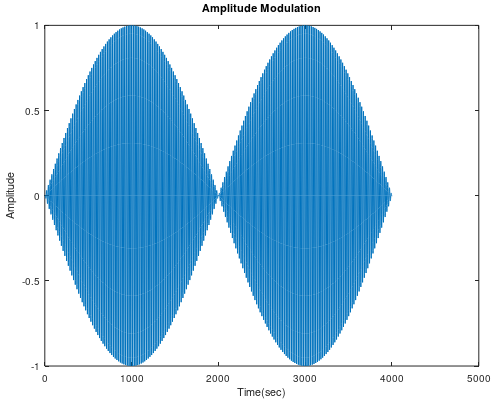Amplitude Modulation using MATLAB
Last Updated :
29 May, 2021
Amplitude modulation (AM) is a modulation technique utilized in electronic communication, most ordinarily for transmitting data by means of a carrier wave. In amplitude modulation, the amplitude that is the signal quality of the carrier wave differs with respect to that of the message signal being transmitted.
Amplitude modulation in MATLAB can be achieved by using the ammod() function.
ammod()
Syntax : y = ammod(x, Fc, Fs, ini_phase, carramp)
Parameters :
- x : amplitude signal
- Fc : carrier signal frequency
- Fs : sampling frequency
- ini_phase : initial phase in the modulated signal y in radians
- carramp : carrier amplitude of the modulated signal
Returns : amplitude modulated (AM) signal
Example: Amplitude modulation of a sine wave with only 3 parameters.
MATLAB
Fc = 200;
Fs= 4000;
t = (0 : 1 / Fs : 1);
x = sin(2*pi*t);
y = ammod(x, Fc, Fs);
plot(y);
title('Amplitude Modulation');
xlabel('Time(sec)');
ylabel('Amplitude');
|
Output :

Share your thoughts in the comments
Please Login to comment...